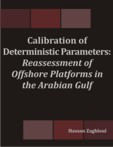Add abstract
Want to add your dissertation abstract to this database? It only takes a minute!
Search abstract
Search for abstracts by subject, author or institution
Want to add your dissertation abstract to this database? It only takes a minute!
Search for abstracts by subject, author or institution
by Bhekisizwe. Mthethwa
| Institution: | University of KwaZulu-Natal |
|---|---|
| Department: | Electronic engineering |
| Degree: | MS |
| Year: | 2013 |
| Keywords: | Electronic engineering. |
| Posted: | |
| Record ID: | 1447408 |
| Full text PDF: | http://hdl.handle.net/10413/9889 |
Small mobile devices which have an ability to access the world wide web (WWW) wirelessly are in demand of late. This demand is attributed to the fact that video and audio streaming are cost effectively accessible via the WWW through wireless fidelity (Wi-Fi). This high demand for cheap real-time multimedia access via Wi-Fi makes it imperative for researchers to develop a wireless local area network (WLAN) standard, such as IEEE (802.11n), that has high data throughput and/or link reliability. The current drawback with the IEEE (802.11n) standard is that it is not power efficient for battery powered small mobile devices because of the high complexity multiple-input-multiple-output (MIMO) scheme implemented within the standard. Spatial modulation (SM) is a recently proposed low complexity MIMO scheme that can achieve high data throughput with good link reliability whilst being power efficient for small mobile devices. This study is aimed at further improving data throughputs of SM and also determining the bit error rate (BER) performance of SM in a city centre environment. Conventional spatial modulation has been investigated in literature with most research efforts geared towards improving the BER performance and minimizing receiver complexity of the scheme over non-cascaded fading channels. We propose adaptive M-ary quadrature amplitude spatial modulation (A-QASM) as a scheme that will improve the average throughput in comparison to conventional spatial modulation given a target BER constraint. The analytical BER lower bound is derived for this proposed scheme and validated by the Monte Carlo simulation results. The simulation results also prove that the average throughput of the proposed scheme (A-QASM) outperforms that of conventional spatial modulation. The definition for the received SNR of the A-QASM scheme is also proposed. In research literature, conventional spatial modulation has been discussed in depth in non-cascaded wireless fading channels. The performance analysis derived in literature in non-cascaded wireless fading channels; does not apply in predicting the BER performance of a mobile device, using conventional spatial modulation, in an environment where there is signal diffraction (i.e city centre or a forest) which makes the signal susceptible to independent cascaded fading. This study contributes by developing an analytical framework for the BER lower bound of conventional spatial modulation over cascaded fading channels. Simulation results closely agree with the derived theoretical framework.
Want to add your dissertation abstract to this database? It only takes a minute!
Search for abstracts by subject, author or institution


|
Predicting the Admission Decision of a Participant...
|

|
Development of New Models Using Machine Learning M...
|

|
The Adaptation Process of a Resettled Community to...
A Study of the Nubian Experience in Egypt
|

|
Development of an Artificial Intelligence System f...
|

|
Theoretical and Experimental Analysis of Dissipati...
|

|
Optical Fiber Sensors for Residential Environments
|

|
Calibration of Deterministic Parameters
Reassessment of Offshore Platforms in the Arabian ...
|

|
How Passion Relates to Performance
A Study of Consultant Civil Engineers
|